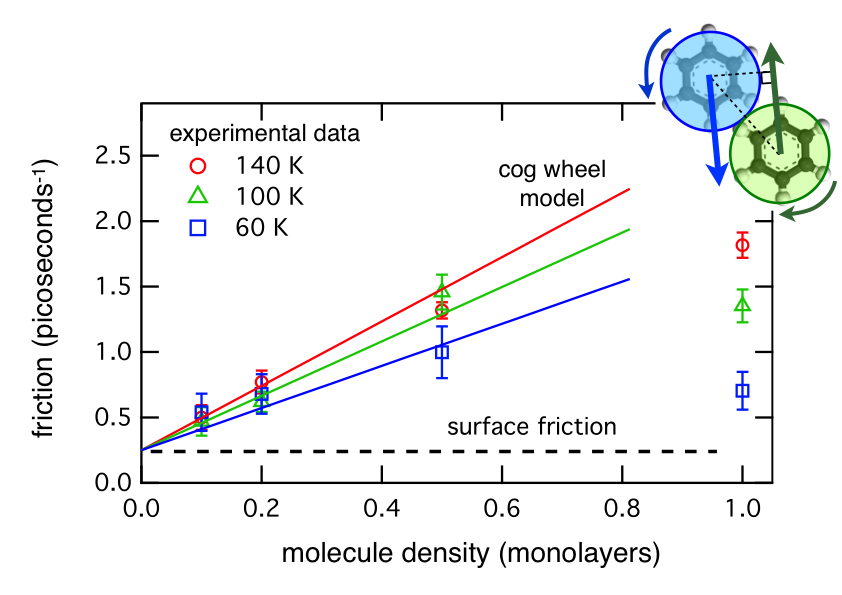




| 09:30-10:40 | Fr1: Thermal transport, friction, and dissipation |
| 10:40-11:20 | Coffee break |
| 11:20-13:00 | Fr2: Catalysis and single-molecule chemistry |
| 13:00-14:00 | Closing session with poster prize ceremony, G. Benedek |
Chair: M. Kawai, Tokyo, Japan
Contributed talk
A classical collision model for surface friction tested by neutron scattering
1Institut Laue-Langevin, CS 20156, F-38042 Grenoble Cedex 9, France
2Cavendish Laboratory, J.J. Thomson Avenue, Cambridge, CB30HE, UK
3Instituto de Fisica Fundamental, CSIC, Serrano 123, E-28006 Madrid, Spain
4ISIS Facility, Rutherford Appleton Laboratory, Chilton, OX11 0QX, UK
The study of friction and diffusion processes on molecular length scales requires experimental methods that deliver sub-nanometer spatial resolution at nanosecond time resolution as well as a high sensitivity to surface adsorbed species. After decades of research in friction the range of available spectrometers with these characteristics is still too limited. Although, neutron scattering is not a widely used surface science technique because neutrons penetrate deep into matter, neutron spectroscopy is able to cover the space and time domains that are of interest here. In addition, a wide choice of high surface density materials are available now that can serve as substrates for diffusion studies. These materials have the added benefit, that they are widely applied in energy storage, sensing and filtering. Hence, research on these materials has strong potential technical impact. In this presentation, we will show recent progress in friction research using neutron spectroscopy and diffraction.
Our research started with rather small and structurally simple molecules on carbon substrates, such as the aromatic molecule benzene adsorbed on the basal plane surface of graphite(0001) (see Fig. 1) [1,2]. For benzene-graphite(0001) at sub-monolayer coverage, we now established the inter-molecular energy dissipation and the surface friction [2] using a range of neutron time-of-flight spectrometers, neutron spin-echo as well as neutron diffraction. The results led us to a surprisingly simple model: the inter-molecular friction can be quantitatively explained by a model of colliding cogwheels (or rough hard disks) that we had developed on the basis of the long established rough hard sphere model for molecular gases (the equivalent 3D model). The new model explains the collisional friction or viscosity based on universal constants only and makes almost no assumptions about the system. When the molecular density approaches the full monolayer, however, three body and higher order collisions are dominant and the rough hard disk model breaks down.

Figure 1: Coverage dependence of the kinetic friction of benzene sub-monolayers on graphite(0001) surfaces.
[1] E. Bahn et al., Physical Chemistry Chemical Physics 16, 22116 (2014)
[2] I. Calvo-Almazan, E. Bahn et al., Carbon 79, 183 (2014)